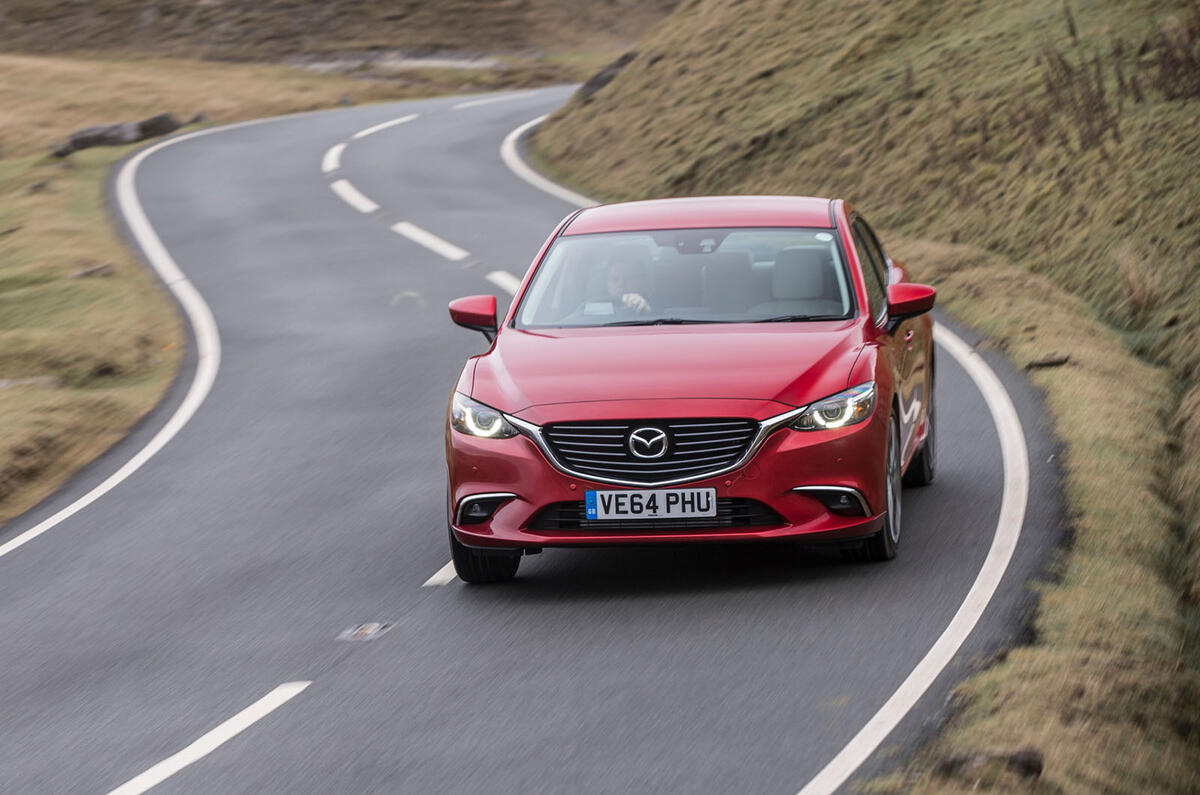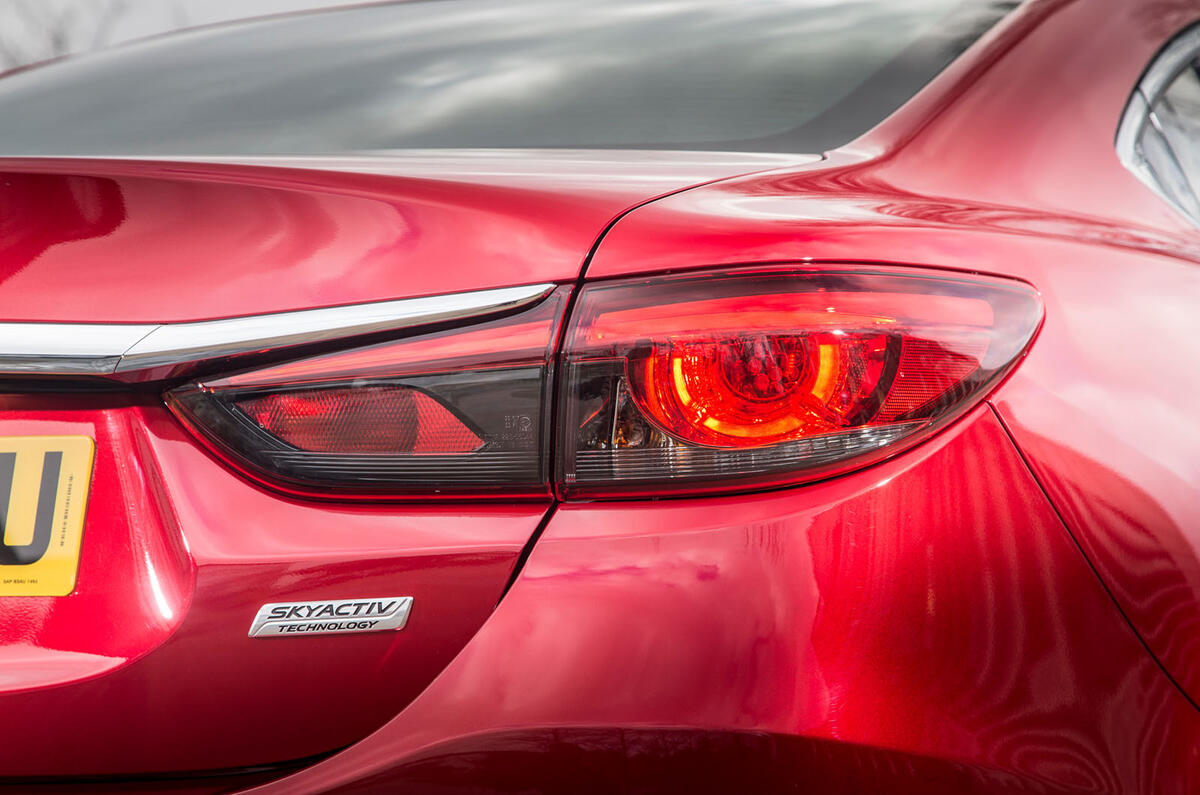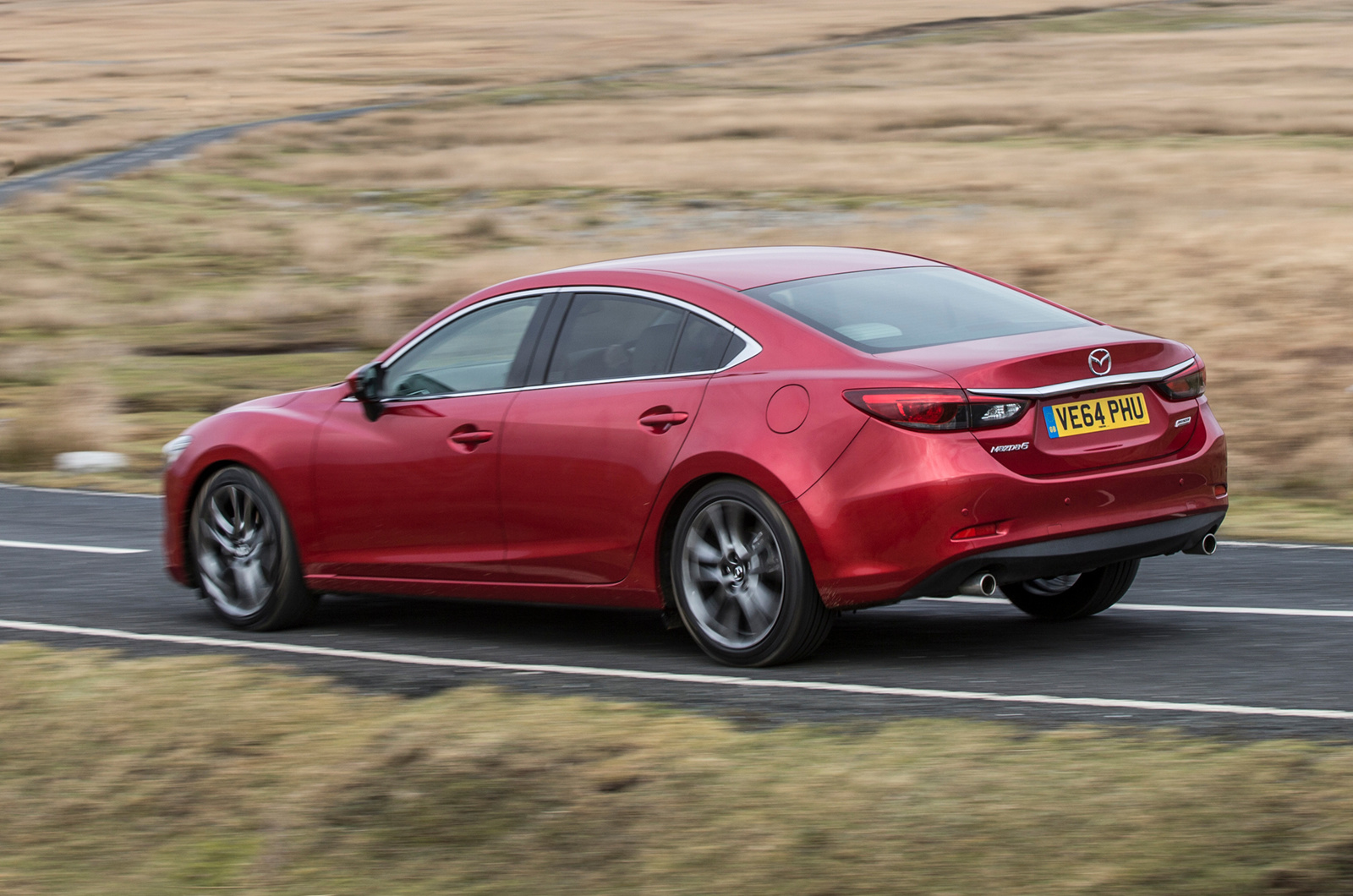Think ‘executive saloon’ and your mind’s eye probably sees a BMW, Audi or Mercedes-Benz.
But the Germans haven’t always had this market segment to themselves, so if you’re on the lookout for something a little left-field but which still majors on economy, practicality and engagement (plus a touch of style), then consider the third-generation Mazda 6.
All versions of Hiroshima’s high-miler were handsome and well received, but the Mk3 of 2013 brought generational changes in the form of clever powertrain tech and bucketloads of kerb appeal that today make it a particularly canny used buy – not least because it avoids the same sort of badge tax as its German contemporaries.
Mazda’s Skyactiv tech centred on maximising the efficiency of its four-cylinder petrol and diesel engines without unduly denting performance.
By giving both engines the same basic structure and an identical 14:1 compression ratio, the 6 could extract more energy from less fuel, with a claimed 15% increase in fuel economy and correspondingly lower CO2 emissions.
That makes for some pretty agreeable running cost figures, most closely associated with the 2.2-litre diesel four-pots, with either 148bhp or 173bhp. Both do around 45mpg day to day, but expect even greater efficiency on the motorway, with 55mpg in sight.











































